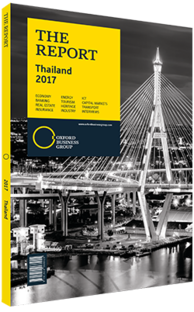Veerathai Santiprabhob, Governor, Bank of Thailand (BOT): Interview

Interview: Veerathai Santiprabhob
How is monetary policy being employed to maintain economic stability in the country?
VEERATHAI SANTIPRABHOB: Amid an uncertain global environment and domestic challenges, the Monetary Policy Committee (MPC) has pursued an accommodative monetary policy, and remains vigilant against potential risks. Since 2015 the MPC has kept the benchmark rate on hold at 1.5%, with a view that overall monetary conditions remained sufficiently accommodative and conducive to economic recovery. Indeed, this is reflected by a low interest rate and ample liquidity in the financial system. Although recent data indicates gradual increases in government bond yields, this is due in large part to external factors, particularly the rate hikes in the US.
However, against the backdrop of an increasingly volatile, uncertain, complex and ambiguous world, we cannot afford to be complacent. Pockets of potential risk remain and they warrant close monitoring. These include the deterioration in the quality of loans in certain sectors such as small and medium-sized enterprises (SMEs) and households. Mindful of the potential impact of low-interest rates, search-for-yield behaviours are closely monitored as they could result in the underpricing of risk. To this end, a new unit specialising in financial stability was set up within the BOT in 2016, and as a result, consultation with other regulators such as the Securities and Exchange Commission and the National Broadcasting and Telecommunications Commission of Thailand have been strengthened to help ensure that the monitoring of financial stability can be carried out in an effective manner.
With major economies adopting unconventional monetary policy, one of challenges faced by emerging countries, including Thailand, is capital flow volatility. Thailand has thus far withstood these challenges reasonably well. A flexible exchange rate and a strong external position, combined with a modest level of external exposure, act as the first line of defence. The BOT is also equipped with comprehensive policy tools and ample international reserves that can be used as a backstop to deal with disruptive capital flows and safeguard financial stability.
In what ways can financial technology (fintech) help promote the overall development of the banking sector in Thailand?
VEERATHAI: With the trend of fintech advancement, there is an opportunity to enhance digital platforms for banking and payment transactions, reducing costs, while improving financial access. On this front, the BOT has upgraded the nation’s financial infrastructure and started a regulatory reform.
Under the National e-Payment Master Plan, the BOT has promoted competition, innovation and digitisation in financial services, with one example being the new faster payment system or PromptPay. This new payment system will facilitate payment transactions for businesses and consumers at a lower cost, which would rank among the cheapest in the world. It will also provide the foundation for many add-on applications that will help to improve productivity across different segments of Thai society.
By supporting financial service providers, including financial institutions and fintech providers, the BOT has adopted a so-called “regulatory sandbox” approach that allows providers to test the viability of their products over a defined period of time, without being fully subject to all the requirements that are normally applied. This approach will assist us in evaluating risks arising from such products, while providing sufficient consumer protection.
Furthermore, financial reform through the Financial Sector Master Plan III 2016-20 has been designed to promote competition through a more efficient financial system and greater digitisation. This entails providing better financial access for individuals, households and SMEs, greater regional connectivity, and sustainability through financial literacy and consumer protection.
You have reached the limit of premium articles you can view for free.
Choose from the options below to purchase print or digital editions of our Reports. You can also purchase a website subscription giving you unlimited access to all of our Reports online for 12 months.
If you have already purchased this Report or have a website subscription, please login to continue.

